Saturn Statistics
| Planetary Symbol: |
 |
Name in Roman/Greek Mythology: |
Saturn/Cronus |
| Diameter: |
119,871 km (74,500 miles) |
Rotation Period about Axis: |
10.67 hrs |
| Mass: |
568.5x10^24 kilograms (95 x Earth's) |
Revolution Period about the Sun: |
29.5 years |
| Density: |
687 kg/m^3 |
Tilt of Axis: |
26o 42" |
| Minimum Distance from Sun: |
1.35 billion km
(840 million miles) |
Surface Gravity: |
8.96 m/s^2 (0.92 x Earth's) |
| Maximum Distance from Sun: |
1.5 billion km
(938 million miles) |
Temperature at Cloud Tops: |
-170o C (-274o F) |
| Orbital Semimajor Axis: |
9.53 AU (Earth=1 AU) |
Average Cloud Top Temperature (K): |
103K |
| Minimum Distance from Earth: |
1.2 billion km
(746 million miles) |
Satellites/Rings: |
known moons, many rings |
 Saturn Image Archive
Saturn Image Archive
 Comparative Planetary Statistics -- in table form
Comparative Planetary Statistics -- in table form
 Comparative Orbital Statistics -- in table form
Comparative Orbital Statistics -- in table form
 Actual Distance to Earth
Actual Distance to Earth
 News from NSF: A Newly Discovered Solar System Contains Scaled-Down Versions of Saturn and Jupiter (2/14/08)
News from NSF: A Newly Discovered Solar System Contains Scaled-Down Versions of Saturn and Jupiter (2/14/08)
 Podcasts from NSF: Systemic Search
Podcasts from NSF: Systemic Search
Last modified September 25, 2009 by Eduardo Araujo-Pradere.
You might also be interested in:
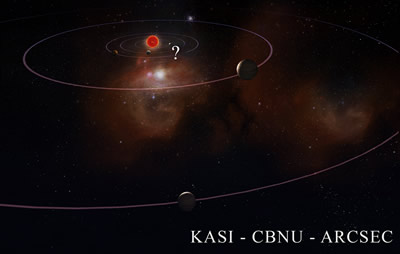
For a long time, scientists have wondered if there are other systems of planets like our own in our galaxy. Recently scientists discovered a solar system that has smaller versions of Jupiter and Saturn.
...more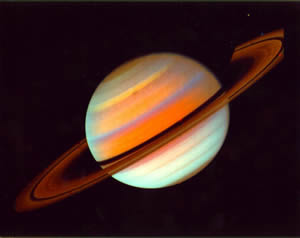
Saturn is the second largest planet in our solar system. It is also very bright in the sky. The ancient Greeks named the planet after the god of farming and time. The rings of Saturn were first seen by
...more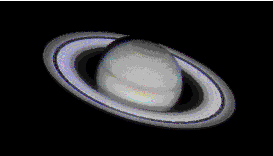
The clouds of Saturn are much less colorful than those of Jupiter. This is because Saturn's atmosphere is made of more sulfur. Sulfur makes Saturn look yellow. The atmosphere of Saturn, like Jupiter, is
...more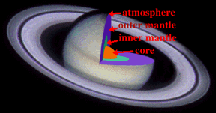
The Giant planets do not have the same kind of layers inside that the earth-like planets do. The history of the giant planets was so different that they formed with much more gas on the inside. Saturn
...more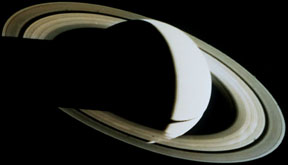
Have you ever seen a picture of Saturn's rings? If you have ever seen a picture of Saturn, it's likely you saw its rings too! The rings are very pretty and many colors. They circle around the middle of
...more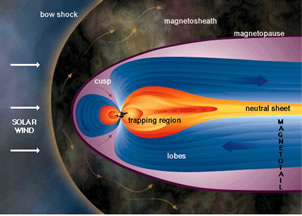
Saturn's magnetosphere is not as big as Jupiter's, but it is still pretty big. It is big enough to hold all of Saturn's moons. The shape of the magnetosphere is affected by its size. The shape is also
...more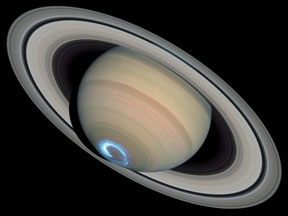
There's a lot of strange stuff going on at both the North and South Poles of Saturn. Two of Saturn's moons also have interesting polar regions. Let's take a look! The atmosphere and clouds are quite odd
...more

 Comparative Planetary Statistics -- in table form
Comparative Planetary Statistics -- in table form
 Comparative Orbital Statistics -- in table form
Comparative Orbital Statistics -- in table form
 News from NSF: A Newly Discovered Solar System Contains Scaled-Down Versions of Saturn and Jupiter (2/14/08)
News from NSF: A Newly Discovered Solar System Contains Scaled-Down Versions of Saturn and Jupiter (2/14/08)
 Podcasts from NSF: Systemic Search
Podcasts from NSF: Systemic Search


 Saturn Image Archive
Saturn Image Archive











